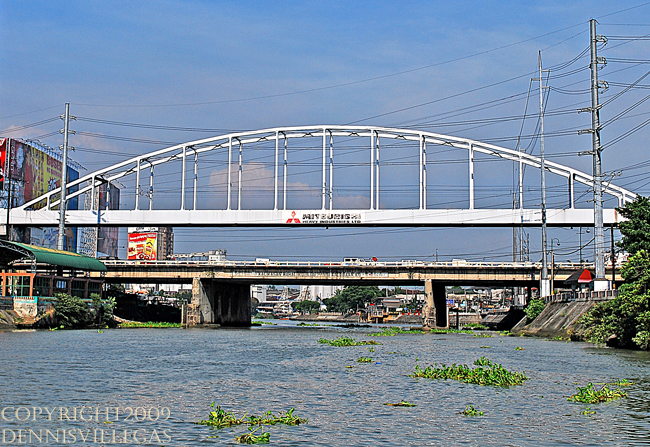
I have always wanted to ride on the Pasig River ferry boat to experience what it would be like to cruise on Manila's most famous and most polluted river. More importantly, I want to see for myself the extent of the river's pollution, and what the Pasig River Rehabilitation Commission (PRRC) had done so far to clean and resurrect it. As you may know, the Pasig River has been officially declared as a dead river, which means it can no longer sustain any kind of marine life, maybe except for the catfishes and the janitor fishes which even thrive on murky polluted waters.
And so one clear Saturday afternoon, I went to the ferry terminal in Quiapo (under the Quezon Bridge), and paid forty pesos for the one-hour trip from Quiapo to Nagpayong, the last station of the ferry. The ferry's captain and stewards allowed me to photograph views while I was standing on the front deck of the ferry's bow. However, the kindly captain warned me that photographing anything near or on the vicinity of the Malacanang Palace is prohibited. Or else, Palace guards on boats may confiscate my camera and charge me with espionage. I said that it was fine, since I didn't want to photograph the President or her palace. I prefer photographing the common people.
When the ferry accumulated enough passengers, we began our Pasig River cruise. It was fascinating to observe Manila from the Pasig River. The cruise was relaxing as the ferry glided quietly along the river. Here and there, birds would flock on the clear sky while a few would rest or pluck something from the water lilies that abound floating on the river.
Although this cruise offered an escape from the hub and noise of Manila city life, yet I quickly realized that this was not sightseeing. There were just too many distressing sights. The river's waters in itself was a disturbing spectacle. It was colored dark brown and there were many refuse and trash floating around. Here and there youths in their teens were swimming in the river despite the public warnings that the Pasig's waters was contaminated with chemicals and pollutants.
Through the years, factories and human dwellings have polluted the Pasig River. In the beginning, the river provided a source of food and clean water to the people living along its banks, but in the more recent industrialized times it had also become a gigantic garbage dumpsite, chemical refuse site of factories, and a sewerage and public lavatory of people.
Yet, there is still hope to revive the Pasig River. No matter if it will take decades or even a century to clean it up, with our joint efforts, we can still make this polluted river a flourishing and life-giving river.
At this point I would just let the pictures paint the proverbial "thousand words"--although I must add a few more words of my own.
And so one clear Saturday afternoon, I went to the ferry terminal in Quiapo (under the Quezon Bridge), and paid forty pesos for the one-hour trip from Quiapo to Nagpayong, the last station of the ferry. The ferry's captain and stewards allowed me to photograph views while I was standing on the front deck of the ferry's bow. However, the kindly captain warned me that photographing anything near or on the vicinity of the Malacanang Palace is prohibited. Or else, Palace guards on boats may confiscate my camera and charge me with espionage. I said that it was fine, since I didn't want to photograph the President or her palace. I prefer photographing the common people.
When the ferry accumulated enough passengers, we began our Pasig River cruise. It was fascinating to observe Manila from the Pasig River. The cruise was relaxing as the ferry glided quietly along the river. Here and there, birds would flock on the clear sky while a few would rest or pluck something from the water lilies that abound floating on the river.
Although this cruise offered an escape from the hub and noise of Manila city life, yet I quickly realized that this was not sightseeing. There were just too many distressing sights. The river's waters in itself was a disturbing spectacle. It was colored dark brown and there were many refuse and trash floating around. Here and there youths in their teens were swimming in the river despite the public warnings that the Pasig's waters was contaminated with chemicals and pollutants.
Through the years, factories and human dwellings have polluted the Pasig River. In the beginning, the river provided a source of food and clean water to the people living along its banks, but in the more recent industrialized times it had also become a gigantic garbage dumpsite, chemical refuse site of factories, and a sewerage and public lavatory of people.
Yet, there is still hope to revive the Pasig River. No matter if it will take decades or even a century to clean it up, with our joint efforts, we can still make this polluted river a flourishing and life-giving river.
At this point I would just let the pictures paint the proverbial "thousand words"--although I must add a few more words of my own.
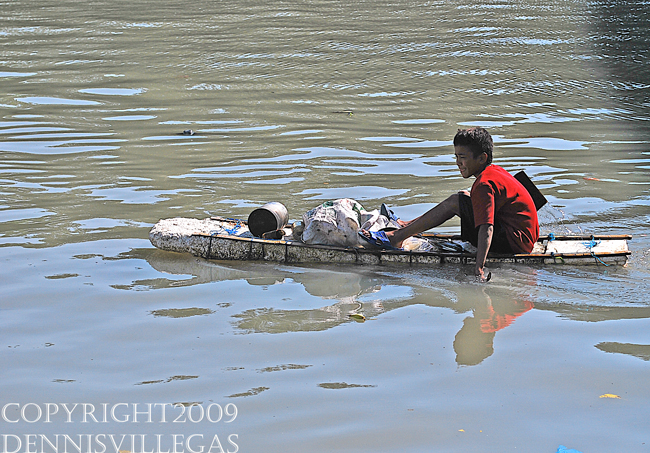
A "kalakal" boy in his makeshift boat made of styrofoam gathering kalakal--any trash or refuse that can be sold to the junk shops
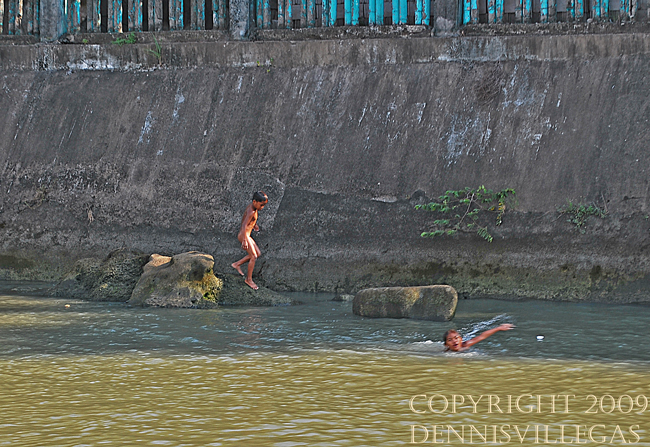
Although the Pasig Coast Guards and the PRRC have already banned public swimming in the river, many youngsters still bath and swim in the polluted river. For the boys it was great fun, while they were unaware that they were exposing themselves to the deadly bacteria and chemicals of the polluted river.

The PRRC has vowed to remove all human habitations three meters from the river banks. But I observed that there are still houses that remained jutting out in the river. The people use the river as their lavatory.
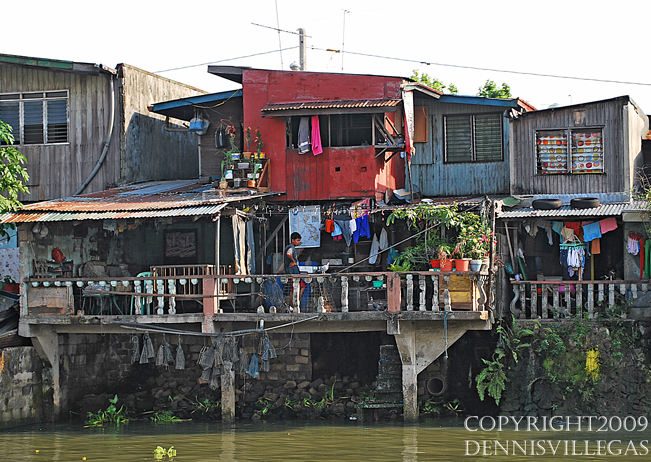
And more houses. You can see at the bottom of the picture the drainage from the sewerage flowing directly to the river. The smell of the waters is not so nice here.
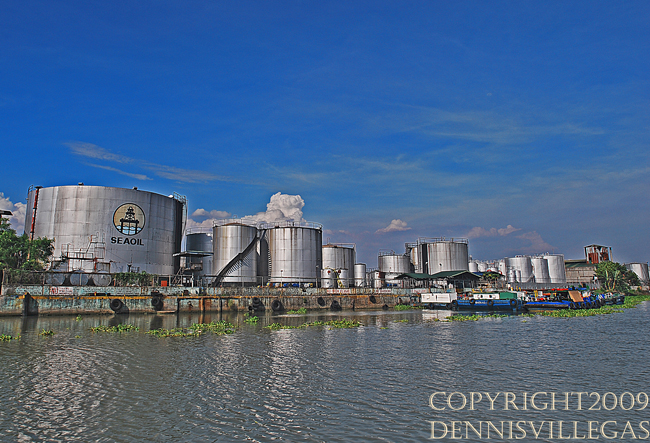
The river bank is also home to the giant oil refineries and repositories, such as this one.

"Kalikasan Mahal Ko, Ilog Pasig Aalagaan Ko". A bridge that is literally over troubled waters. The dirty signage literally and ironically means in English: I love the environment. I will take care of the Pasig River".
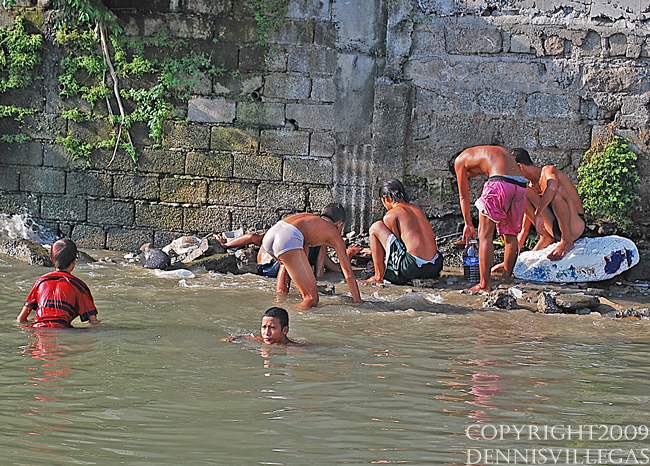
Another group of boys enjoying the cool polluted waters amidst the heat of afternoon sun.
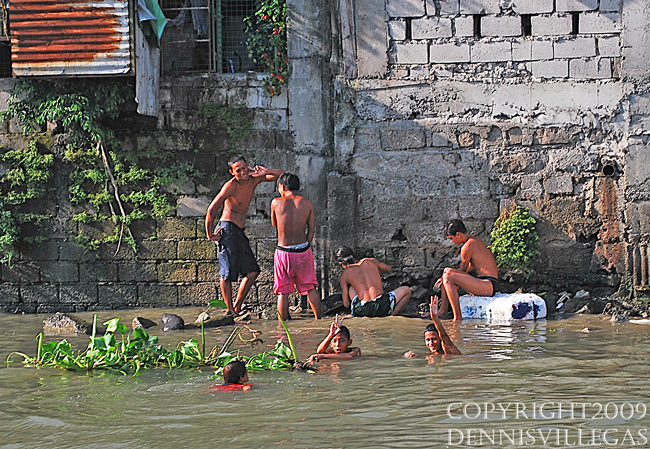
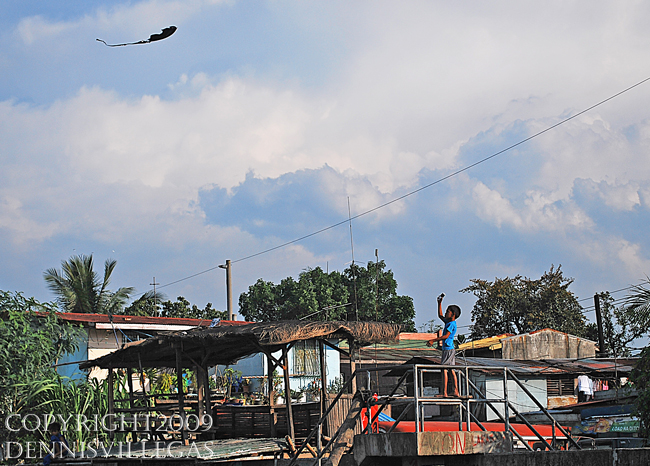
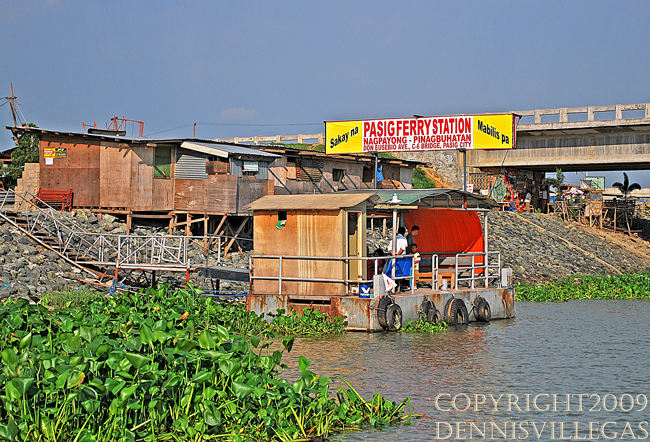
The Nagpayong Terminal in Pasig, the last terminal of the Pasig River Ferry.
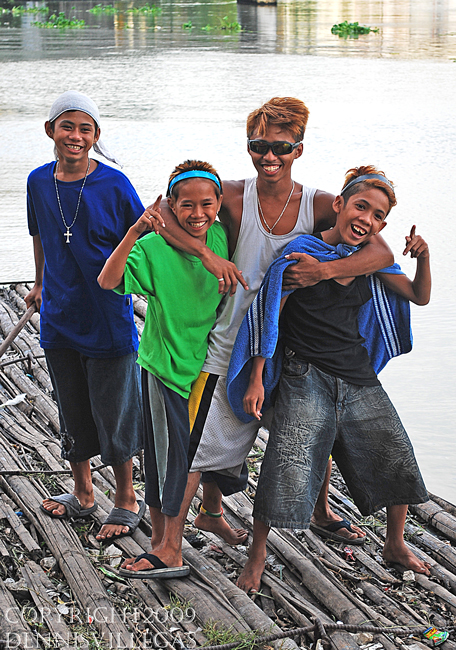
Kalakal boys after a hard day's work gathering refuse from the river--using this raft of bamboo. They were very happy because each of them earned 35 pesos (about $0.75) for a whole day of collecting refuse in the Pasig. A nice day's earnings according to the boys.
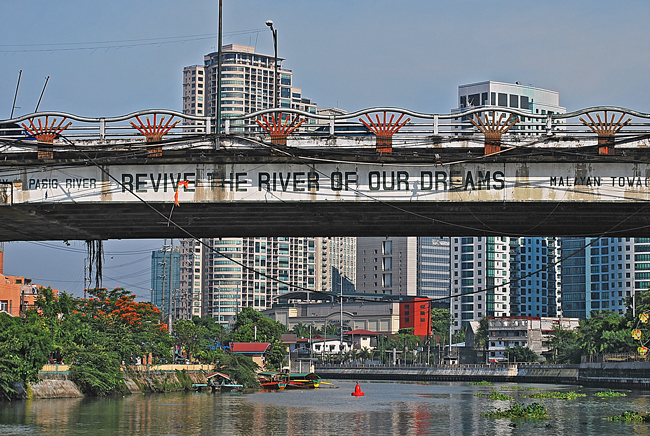
We may no longer be alive when the dream of a clean Pasig River comes true--but our children and grandchildren may be, and for that we will be remembered for eternity.
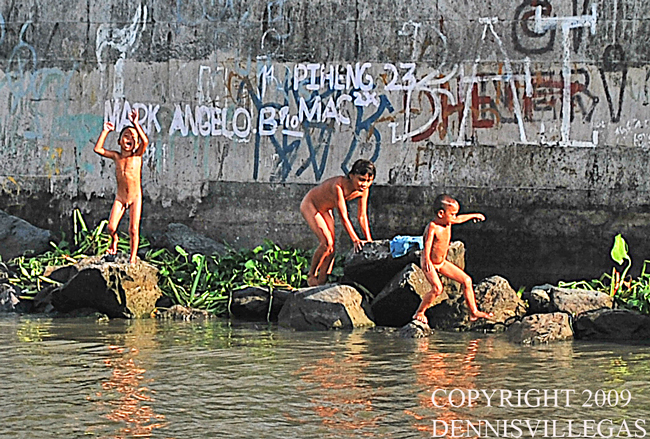
No comments:
Post a Comment